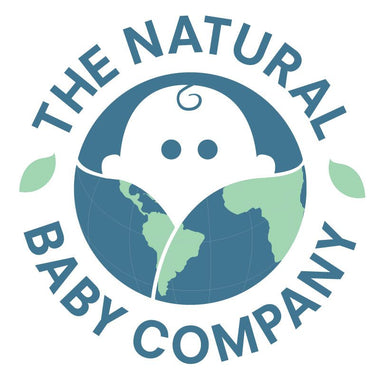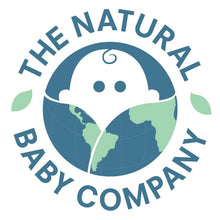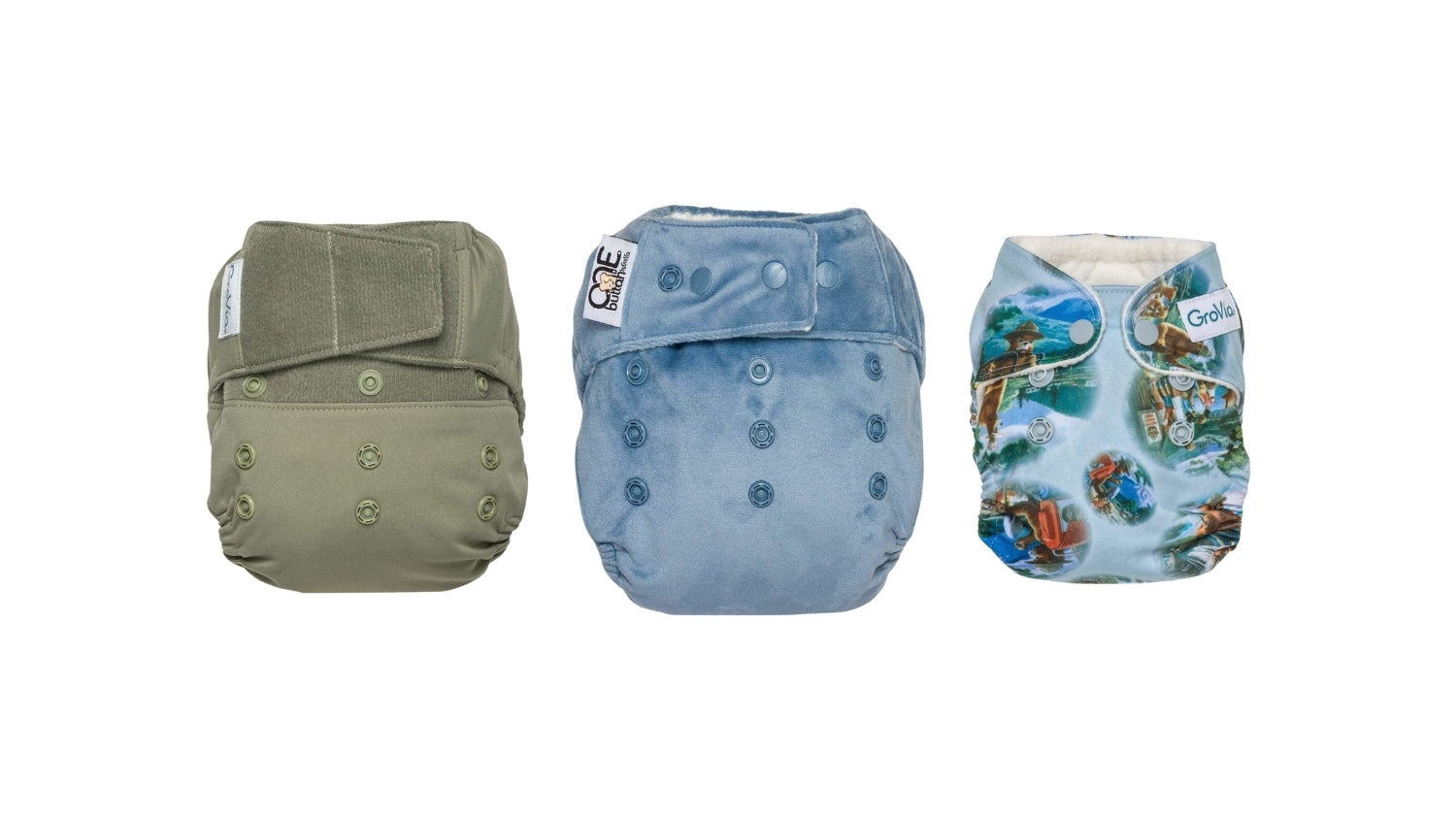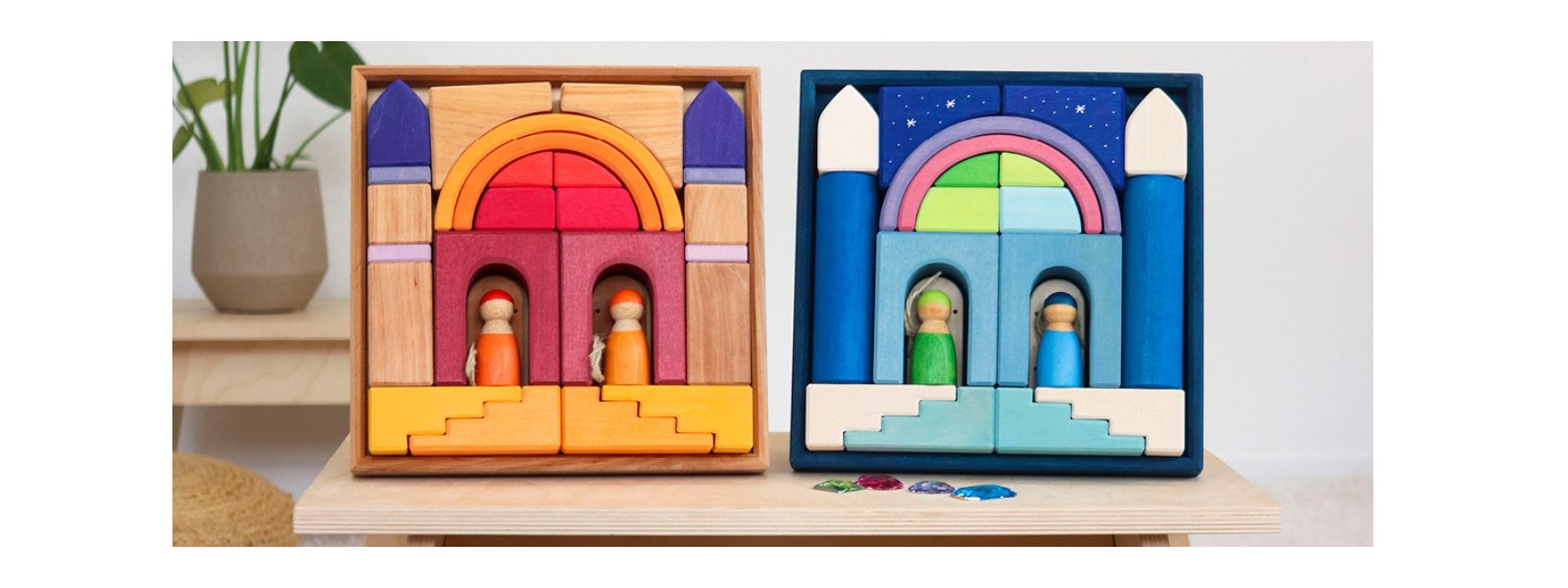The Five Major Styles of Cloth Diapers
Times have changed for cloth diapers. Gone are the days of safety pins, plastic pants, and leaks. Today's cloth diapers have been engineered to be as easy to use as disposables. Flushable liners, hook and loop closures and high-tech fabrics create comfortable and functional diapers that are easy to use. Easy-to-use features and the eco-friendly nature of cloth can make them the right choice for parents, no matter their income. Over the years, we have continually seen an increased interest in cloth diapers because of the many benefits they provide. There are five major types of cloth diapers, with varying levels of ease of use and expense. The goal of this guide is to simply break down the different cloth diaper varieties and explore the benefits of each type.
Prefold Cloth Diapers
Prefold cloth diapers have been used and trusted for decades. There’s a good chance if your mom used cloth diapers on you and your grandmother on her that they both used prefolds. But that doesn’t make them old-fashioned.
Prefolds are still a commonly used cloth diaper today. Why? Three reasons: they’re inexpensive, versatile and easy to clean. Flat and rectangular, you fold them into the shape you want, fasten on your baby, and then put a waterproof diaper cover on top. You can also use prefold cloth diapers as burp cloths, absorbent changing pads and dusting rags.
Some disadvantages include requiring a fastener and cover, having to buy bigger sizes as your baby grows and being bulky. So while they may not be the most convenient choice, they’re still very effective and economical, and that is what’s kept them in the cloth diaper game for all these years.
Fitted Cloth Diapers
Fitted cloth diapers are similar in their shape and fit in comparison to disposable diapers. They’re hourglass-shaped and have elastic around the legs and back. This means a fitted diaper will fit closely and comfortably up against your baby and keep his or her messes contained. Most come with snaps or a hook and loop closure.
Many fitted diapers are sized, so you’ll have to buy new ones as your baby grows, although some brands offer a one-size option with rise snaps on the front of the diaper. Another downside is that fitted diapers aren’t waterproof. They have to be used with a waterproof cover.
If you need a cloth diaper that’s easy to use and great at containing messes, it’s a fitted cloth diaper. Their absorbency ability—thanks to the entire diaper being absorbent—makes fitted diapers a top overnight option for many cloth diapering families.
Pocket Diapers
The pocket diaper was really the first innovation in cloth diapers in hundreds (maybe thousands!) of years. It is the first true "modern cloth diaper", though many find the design features to be outdated and complicated relative to more innovative designs. A pocket diaper is made up of a waterproof cover that has a "stay dry" polyester lining that acts as a pocket between the lining and the cover. This allows you to insert an absorbent pad or prefold into the pocket . A key disadvantage of pocket diapers is that they tend to have a bulky and poor fit. A second (and gross!) disadvantage is the process of "un-stuffing" the pocket, which we will leave to your imagination. Lastly, with a polyester lining, you will have very little choice in putting anything besides synthetic fibers in contact with your baby's skin. Key advantage of pocket diapers are that it is relatively easy to add significant amounts of various types of absorbency, they do not require a cover, and they are easy to fasten on baby.
All In One Cloth Diapers
The advances found in All In One (AIO) diapers build upon the "one wear, one wash" functionality of the pocket diaper. AIO diapers are a one piece diaper that consist of a set of absorbency layers (typically two, sometimes hourglass shaped) that are sewn inside of an outer waterproof cover. They are convenient for quick changes, are used by many of today's families as the "core" component of their diapering approach, and with an extra diaper booster inside can work very well overnight. Key disadvantages of AIO diapers include longer drying times (some brands) and the "one wear, one wash" approach that is used. Key advantages of AIO diapers is the sheer simplicity of the design, the trim fit (of some brands), and that they are a good "all around" choice that can be used in almost any situation. SHOP AIO >
Hybrid Cloth Diapers
Sometimes called an All In Two (or AI2) cloth diaper, Hybrid diapers are designed as a system to make it as easy as possible for parents to diaper their babies naturally. Hybrid diapers consist of a shell (or diaper cover) into which you insert a variety of absorbency layers. The Hybrid style got its name because the absorbency layers used may be either cloth or disposable, (like the GroVia Biosoaker), chosen based on the setting. For example, you may choose to use cloth absorbency whenever at home, but use disposable when heading to daycare or travelling. Hybrid systems can come in a sized approach (meaning additional purchases as your baby grows) or in a one-size option (which grows with your baby). Key disadvantages of Hybrid diapers is that they can appear to be complicated (however, with very little experience, this concern typically disappears). Another disadvantage is that some Hybrid designs lack contoured fits on the interior, leading to the chance for leakage. Leg gussets and elastic used in some brands solve this problem. Key advantages of Hybrid diapers are the level of flexibility that they introduce to cloth diapering (cloth and disposable options fit better with most modern lifestyles) and the fact that some brands are purposefully designed to enable multiple wearings of outer shells between washes. SHOP HYBRIDS >




